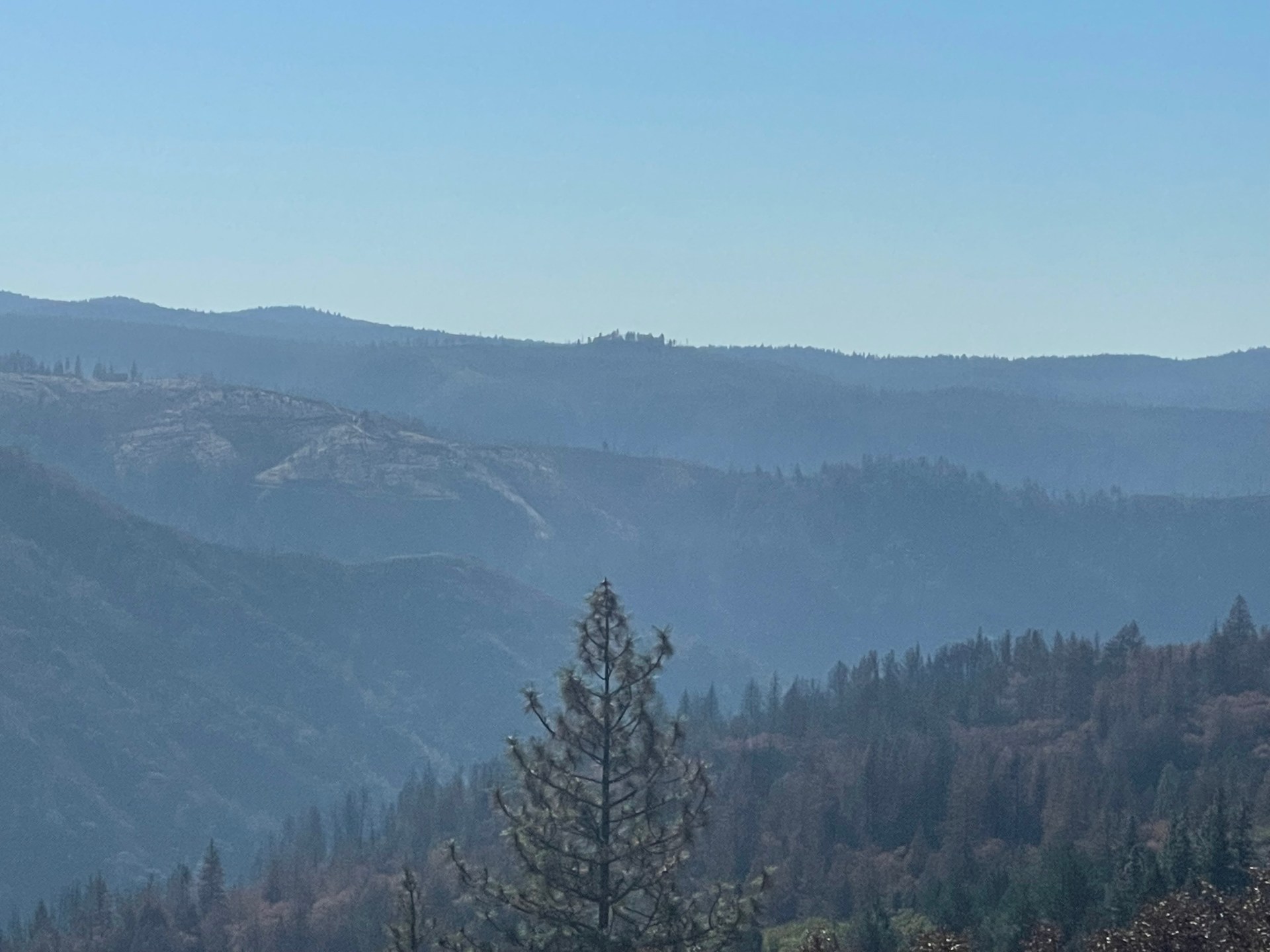CALIFORNIA
- Erin and Max chose to leave their home in Sacramento, California and move to a new home on the slopes of Forest Hill, but this became one of the most wrong decisions of their lives due to the fires that ravaged their small town.
The couple spoke to Al Jazeera Net while they were exercising with their dog, and they said, "We moved here 4 years ago in pursuit of comfort and for the presence of large areas and beautiful landscapes that we miss in the crowded city, and our dog - who is part of our family - loves the place a lot and enjoys playing outside the house in open spaces. ".
Most of the cities of the American West are located in valleys, surrounded by mountains and heights that extend within sight, and these slopes have witnessed wide urban extensions, especially in the vicinity of large western cities such as Phoenix, Arizona, Las Vegas, Nevada, or Sacramento, California.
Because of the overcrowding in cities, accompanied by high crime rates and the spread of homeless, some Americans, especially the rich, choose to move and live in homes on the slopes of the highlands and mountains that surround the cities.
List of firefighting instructions in downtown Forest Hill (the island)
"It's like the world is at an end"
During the beginning of the summer of this year, an area adjacent to Forest Hill witnessed the outbreak of wildfires, which greatly affected the small town of no more than two thousand people.
The fires destroyed a number of homes in the foothills of the hills near the town of Forest Hill, which prompted hundreds of residents to evacuate them for several weeks until firefighting crews succeeded in containing the fire and completely eradicating it.
"Watching the flames, the flames and the smoke coming out of them, it feels like the world is coming to an end," said Amy Peterson, a worker at the town's only post office.
Despite the temporary evacuation of the town - which contributed to the absence of victims - the number of emergency room visits to hospitals in Northern California during the wildfire season increased by 37%, and there is an increase of 66% in visits related to breathing problems due to the smoke of the wildfire that swept through the areas Surrounded Sacramento for days.
fire triangle
All of California has been in a major drought for several years, which has depleted its water reservoirs, and according to the US Drought Observatory, weather conditions are a large part of the reason for the active rise in fires in recent years.
A Congressional Research Service study indicates that since 2010, just over 58,000 forest fires have burned annually, resulting in the loss of 7 million acres annually, and causing $16.5 billion in direct damage, and these numbers do not take into account indirect damage.
Meteorologists can't yet predict the timing or course of a wildfire outbreak, but there are 3 conditions that must exist for a forest fire to start, and firefighters refer to them as the "fire triangle": fuel, oxygen, and a heat source.
It is not possible for fires to erupt and spread without this catastrophic triple recipe, with which a spark may turn into a fire that lasts for weeks or months and consumes tens or hundreds of thousands of acres.
Another cause of forest fires is lightning. Scientists have found that every degree of Earth's temperature increases lightning activities by 12%. Since 1975, the number of fires started by lightning has increased to 5% of all forest fires.
The hot months from April to September are the season for wildfires in the American West, and the fires reach their peak in August of each year.
And forest fires in general are unplanned, and they occur in large areas such as the tree forests that cover the highlands, and they are mostly caused by human activity and mistakes, or as a natural phenomenon as a result of lightning, especially in areas experiencing great drought, and it can erupt at any time, and 50% Of the recorded wildfires it is not known how they started.
Scorched forests within sight in the mountains of Northern California (Island)
The paradox of fire
Most wildfires are put out by firefighters in their early days, and data from the US Department of the Interior (the Department of Forests and National Parks) indicates that 3% of fires burn out and escape efforts to become massive, uncontrollable fires.
Each time a fire is extinguished, more fuel is left on the ground, contributing to the next fire, a phenomenon described as the "fire paradox".
Northern California has seen many severe fires this year, including some continuing until the end of last October in areas east of Sacramento, and authorities are closing roads and preventing people and cars from approaching these areas.
The effects of a recent fire in one of the forests adjacent to the town of Forest Hill, Northern California (the island)
Other effects
Wildlife tends to adapt sometimes to fires, and develops some of its manifestations of plants and animals themselves to live with, and others thrive after fires, and this does not mean that all wild animals shoot a friend, there are some who cannot overcome fast-moving fires, and small animals particularly at risk.
For many environments, fire doesn't necessarily mean bad news. Fires give some plants and animals new opportunities, and according to wildlife biologist Patricia Kennedy, "a lot of species require reset," and that comes from wildfires.

